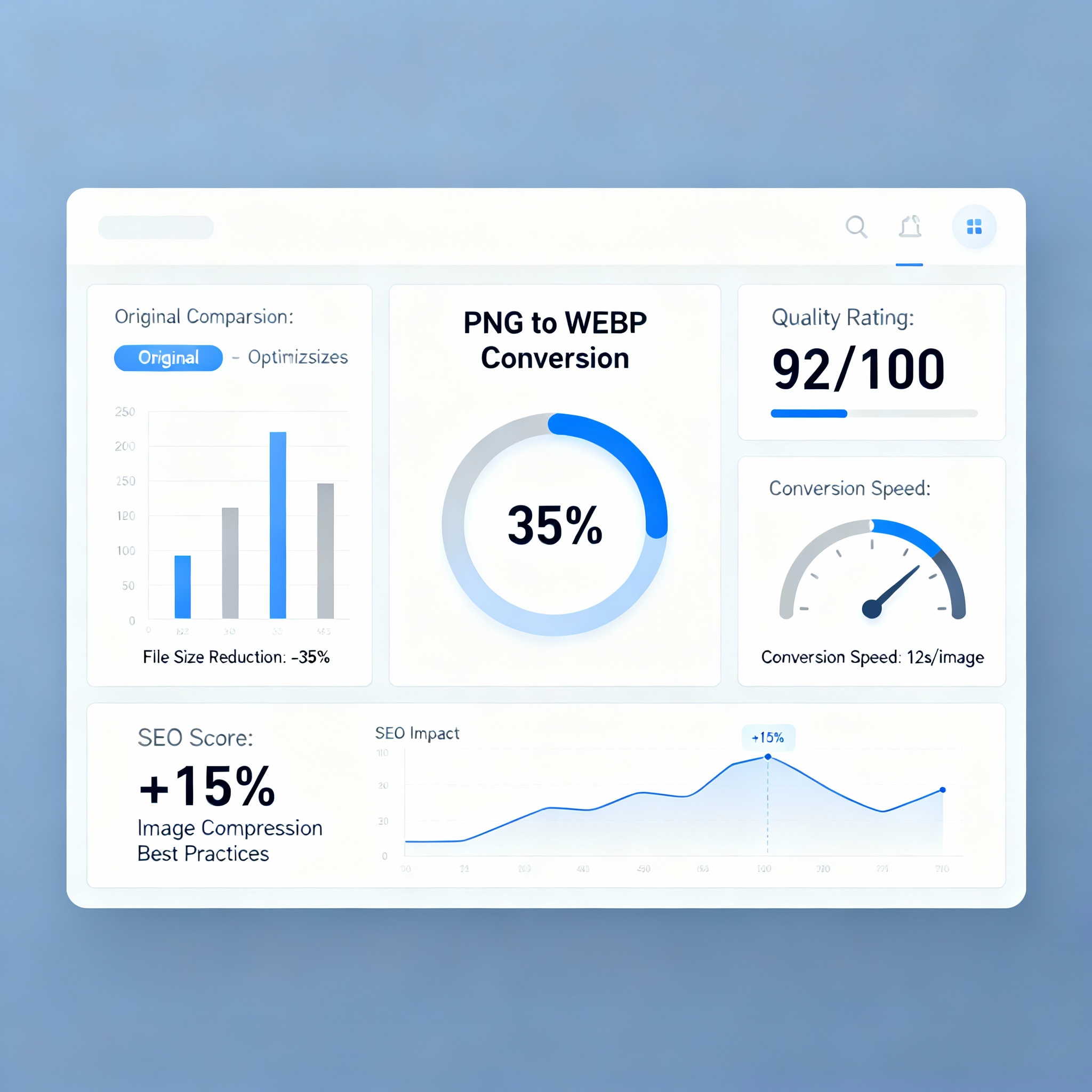
PNG to WEBP
Created on 19 October, 2025 • Image Manipulation tools • 30 views • 2 minutes read
Converting PNG images to WEBP is a highly effective way to supercharge your website’s speed and SEO performance
Converting PNG images to WEBP is a highly effective way to supercharge your website’s speed and SEO performance. WEBP—a modern image format developed by Google—delivers substantially smaller file sizes without sacrificing visual quality. Let’s explore why PNG to WEBP conversion is a must for digital marketers, web developers, and SEO professionals aiming for faster, more competitive sites.
PNG to WEBP Converter: Definition & Purpose
What Is PNG to WEBP Conversion?
A PNG to WEBP converter is a tool or utility that transforms standard PNG files into the WEBP format. WEBP supports both lossless and lossy compression, offering far superior compression rates compared to PNG, while maintaining transparency features necessary for logos, icons, and overlays.
These converters can be found as:
- Online tools for drag-and-drop instant conversion.
- Plugins like WordPress’s Imagify and ShortPixel for automatic sitewide conversion.
- Command-line utilities or libraries (e.g., ImageMagick, Sharp for Node.js) for bulk, developer-focused workflows.
Why Convert PNG to WEBP? SEO & Performance Benefits
Drastically Smaller File Sizes
- WEBP files can be 30–50% smaller than PNGs—and sometimes much more—without visible loss of quality.
- Images are usually the bulkiest elements on a web page, so reducing their size leads to quicker load times.
Faster Page Loading = Better SEO
- Google and modern search engines rank fast sites higher. Image optimization is heavily weighted in SEO score calculations, including Google’s Core Web Vitals (such as Largest Contentful Paint and First Contentful Paint).
- Transitioning to WEBP can increase PageSpeed Insights scores by 5–10 points, directly improving search rankings.
Lower Bounce Rate & Better User Experience
- Users expect fast, responsive experiences on desktop and mobile. Lighter images mean pages load faster, which keeps visitors engaged longer and reduces bounce rates.
- Superior mobile performance helps with Google’s mobile-first indexing—a major SEO advantage.
Bandwidth and Hosting Savings
- Smaller images use less bandwidth, which is crucial for sites with high traffic or users with limited data plans.
Modern Compatibility
- WEBP is supported by all major browsers and most CDNs in 2025, making deployment seamless.
PNG to WEBP Best Practices for SEO
- Always add descriptive ALT text to every WEBP image for accessibility and image SEO.
- Use “picture” tags with fallback to PNG/JPEG for legacy browser compatibility while serving WEBP to supported browsers.
- Batch convert your PNGs to WEBP with plugins or scripts for efficiency.
How to Convert PNG to WEBP
- Online Tools: Upload and convert in seconds—ideal for blogs, e-commerce, and small businesses.
- WordPress Plugins: Automatically convert uploaded PNGs to WEBP sitewide.
- Command-Line Tools: For large-scale deployment, use CLI utilities or integrate into build systems.
Conclusion
Converting PNG to WEBP is one of the easiest, high-impact strategies for speeding up websites, improving SEO, and delivering great experiences to all users. Make this a core part of your website’s image optimization and enjoy higher rankings and better retention rates.
Popular posts
-
GIF to BMPImage Manipulation tools • 353 views
-
GIF to WEBPImage Manipulation tools • 256 views
-
GIF-to-PNGImage Manipulation tools • 190 views
-
SHA-3/512 generatorConverter tools • 152 views
-
GIF to JPGImage Manipulation tools • 122 views